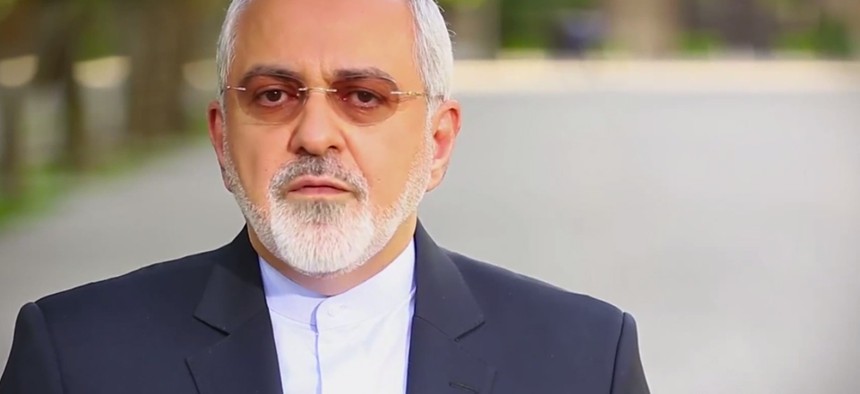The U.S. and Iran's YouTube Diplomacy

YouTube
The U.S. and Iran take to YouTube and the op-ed page to communicate directly with the other country’s citizens.
As negotiators from Iran and the P5+1 nations meet behind closed doors in Vienna in a final push for a comprehensive nuclear deal, a separate round of negotiations is taking place online.
Secretary of State John Kerry and his Iranian counterpart, Foreign Minister Javad Zarif, traded accusations, praise, and hopeful words in advance of the final round of nuclear negotiations. The two sparred in a pair of op-eds published in the The Washington Post (Kerry) and Le Monde (Zarif), and in a video Zarif made available on YouTube.
These messages, posted to public forums, continue the trend of an increasingly popular public-relations tactic among both countries' governments of reaching out directly to the other country's citizens.
In the slickly produced video released Wednesday, Zarif exits the Iranian foreign ministry and strides purposefully past a bubbling fountain, planting himself in front of the camera to pontificate on the "unique opportunity to make history" in the coming weeks. He rails against the "crippling" sanctions Iran has been faced with in the eight years since failed nuclear negotiations in 2005, but makes clear that the sanctions did not break Iran's resolve to pursue its nuclear program. Foreign pressure "didn't bring the Iranian people to kneel in submission," Zarif said, "and it will not now nor in the future."
He ends by restating the Iranian claim that its nuclear program will remain peaceful, and reasserting his government's commitment to end the crisis by the deadline for a nuclear deal on July 20.
Ironically, Iranians are unable to view Zarif's message on YouTube without circumventing government-imposed Internet filters.
This is not the first time Zarif has used YouTube to broadcast the Iranian government's position. In November 2013, just weeks after the historic phone call between President Obama and Iranian President Hassan Rouhani, a somber Zarif spoke from his desk in the foreign ministry. In contrast to the combative tone in parts of Wednesday's message, Zarif's first video focused on explaining the Iranian side of the nuclear conflict in human terms. "Imagine being told that you cannot do what everyone else is doing, what everyone else is allowed to do," he said then.
American presidents, for their part, have long used Nowruz, the Iranian New Year, to speak directly to the Iranian people and their leaders. In videotaped remarks this March, President Obama spoke of his "deep respect for the Iranian people," and expressed hope for a nuclear deal in the coming year. Presidents Bush and Clinton before him used the same platform to publicly speak to Iranians.
While both sides acknowledge the hurdles that lie in the weeks ahead, the back-and-forth public-relations campaign between top Iranian and American officials reveals an openness between the two countries that did not exist even a year ago.



